Is Threads Ready for Facebook Integration?
Meta has begun a new test for cross-posting between Facebook and Threads, with some users now being promoted to share their Facebook updates to the new, Twitter-like app. Here’s what you need to know.
In the fast-paced realm of social media, platforms like Meta are constantly exploring new features and integrations to enhance user experiences. One of the latest experiments involves the cross-posting functionality between Facebook and Threads, Meta’s micro-social networking app. Today, we’ll delve into the implications of Meta’s test and the potential impact it may have on content sharing and user engagement.
Understanding Meta’s Cross-Posting Initiative
Meta’s initiative aims to simplify the process of sharing updates between Facebook and Threads, offering users a seamless way to expand the reach of their content. The test, currently in limited rollout on iOS devices, allows users to toggle on Threads cross-posting for text and link posts. While this aligns with Meta’s strategy of maximizing content distribution across its platforms, it raises pertinent questions about user preferences and platform differentiation.
Challenges and Concerns: Platform Identity and User Experience
Critics express concerns about the integration between Threads and Facebook potentially diluting Threads’ identity as a micro-social networking platform. Threads, positioned as a counterpart to Twitter, caters to a specific user base seeking concise, real-time updates.
Integrating its functions with Facebook may blur the lines between the two platforms, leading to a homogenization of content and user experiences. Additionally, the proliferation of cross-posted content raises concerns about redundancy and diminished quality within the Threads platform.
Meta’s Vision: Building a Billion-User Platform
Despite challenges, Meta remains committed to positioning Threads as a billion-user platform, leveraging positivity, AI-driven recommendations, and content engagement. The company’s data-driven approach underscores its confidence in the efficacy of cross-platform integrations to drive user retention and satisfaction. However, uncertainties persist regarding whether Threads users align with Meta’s vision or seek a differentiated social media experience.
Navigating Integration and Differentiation
The tension between integration and differentiation underscores the complexity of Meta’s strategy in managing its suite of platforms. As Meta continues to refine its approach, digital marketers and social media professionals must remain agile, adapting their strategies to evolving user preferences and platform dynamics. By closely monitoring developments and consumer behavior, stakeholders can help ensure that their efforts align with the evolving social media landscape.
Adapting to a Dynamic Social Media Landscape
Meta’s trial of cross-posting between Facebook and Threads is a big move to make sharing content easier across its platforms. But worries about keeping each platform unique, pleasing users, and maintaining good content quality show that combining different social media sites isn’t easy. As Meta works through these challenges, it’s important for everyone involved to stay alert and adjust their plans to match the changing desires of users in the fast-moving world of social media.
As businesses strive to navigate the complexities of the ever-changing social media landscape, staying ahead of trends becomes paramount. Onimod Global understands the challenges presented by innovations like Meta’s cross-posting test and offers tailored solutions to help businesses thrive. With our expertise in digital marketing strategies and commitment to staying abreast of industry developments, we empower businesses to adapt and succeed in the dynamic world of social media. Contact us today at onimodglobal.com to learn how we can elevate your digital presence.

